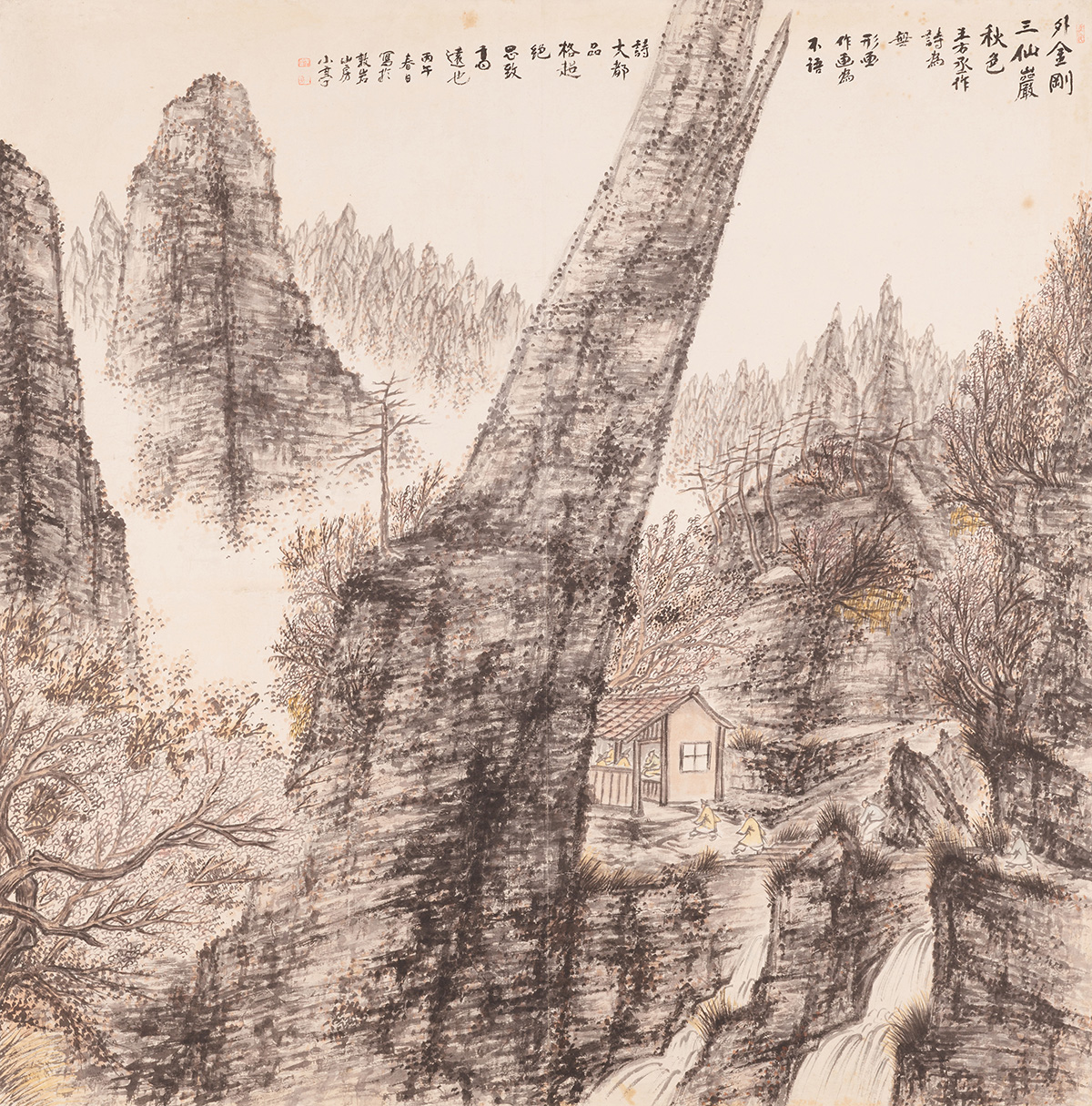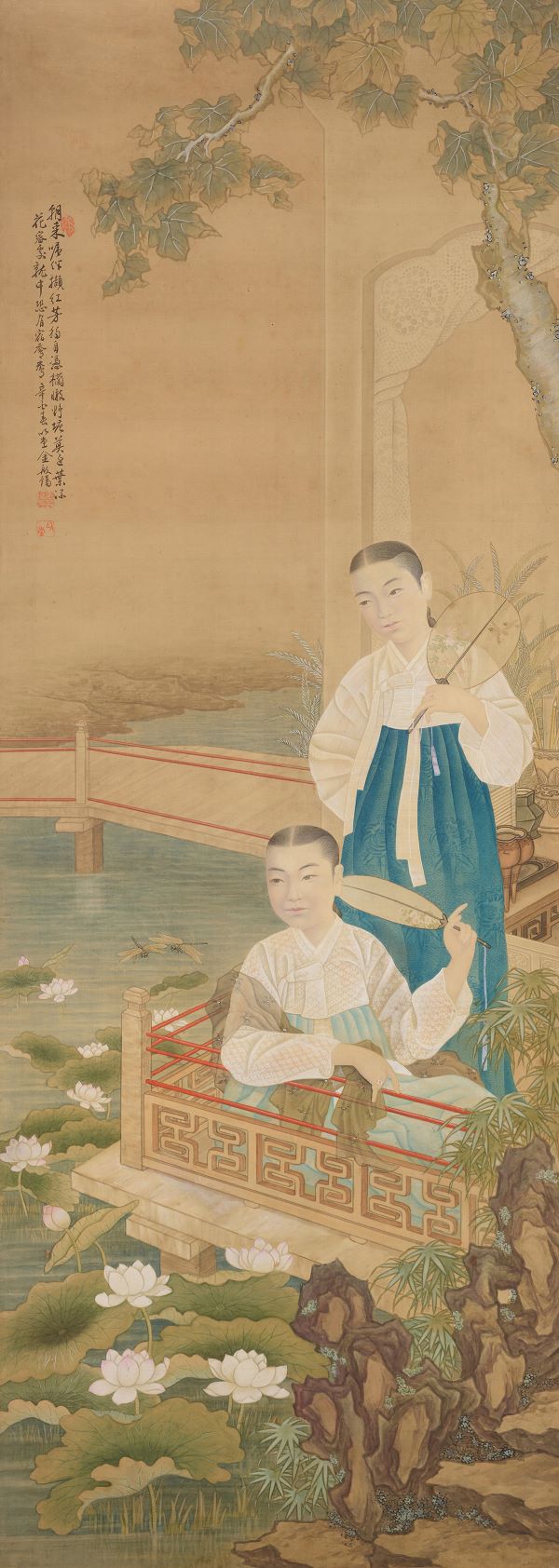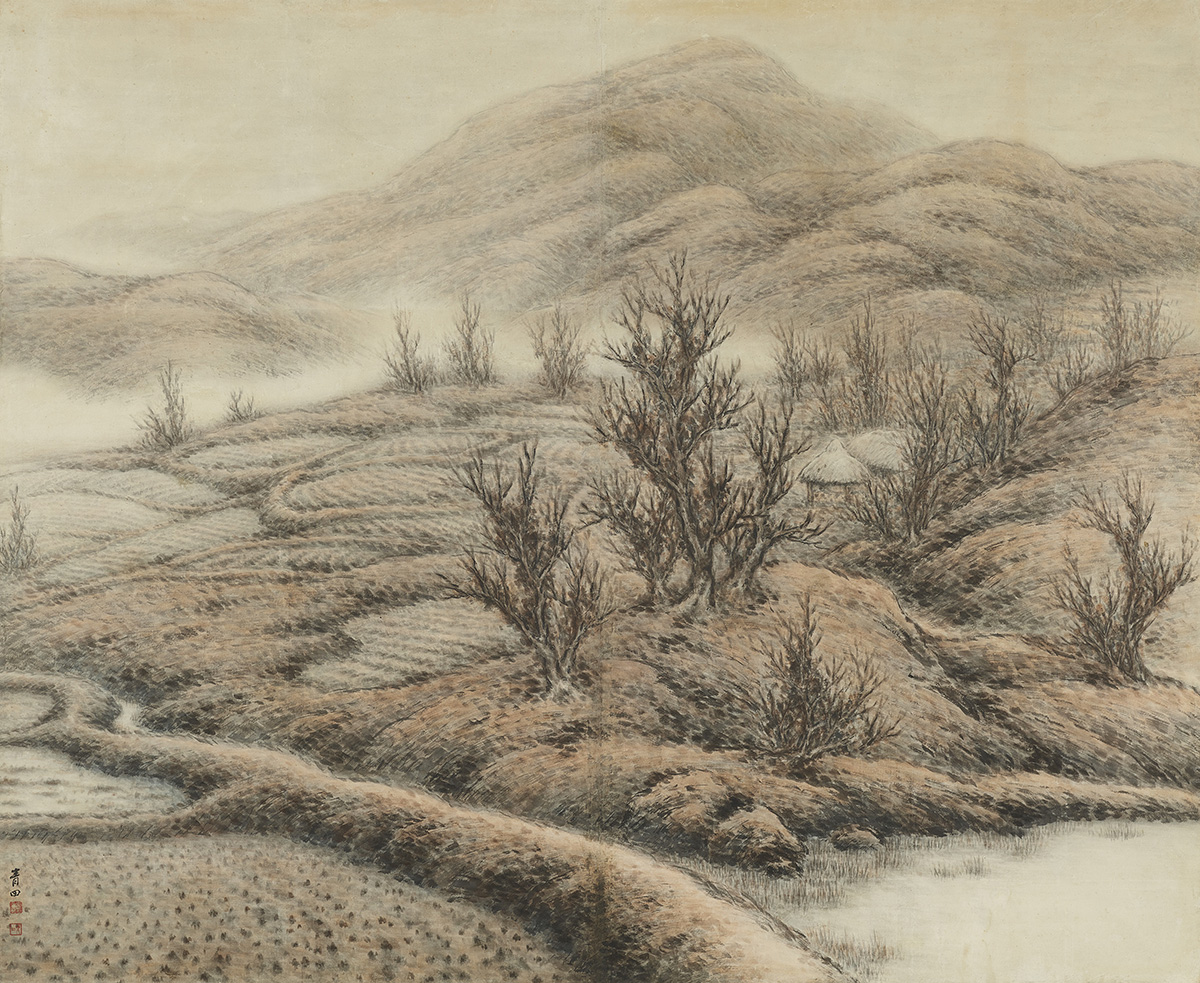
Byeon Gwansik, Samseon-rock in Outer Mt. Geumgang in Fall, 1966, Ink and color on paper, 125.5×125.5cm. MMCA collection
Byeon Gwansik
* Source: Multilingual Glossary of Korean Art. Korea Arts Management Service
Related
-

No Soohyun
No Soohyeon (1899-1979, pen name Shimsan) learned painting from An Jungsik and Cho Seokjin at the Calligraphy and Painting Society (Seohwa misulhoe) and graduated in 1918. In 1920, he participated in a series of decorative paintings at Changdeokgung Palace, and the resulting mural of Joilseongwando is his work. In 1923, he co-founded the art group Dongyeonsa with Lee Yongwoo, Lee Sangbeom, and Byeon Gwansik. Even though this group attempted to explore new, non-traditional possibilities for Eastern painting, their association did not last long. During the 1920s, he participated in the Joseon Art Exhibition [Joseon misul jeollamhoe] and was the first artist to contribute editorial cartoons to the Choson Ilbo from 1924 to 1927. In the 1930s, he stopped participating in the Joseon Art Exhibition. Instead, he dedicated himself to exploring landscape painting based on his real experience of scenery and later established a new landscape painting style that incorporated the motif of oddly formed rocks and strangely shaped stones. Mountain Village (1956), Gyesanjeongchwi (Atmosphere of Valley and Mountain) (1957), Hongyeam (1961), and Paradise (1968) are considered his most representative works. He served as a judge and editorial board member of the National Art Exhibition and educated a variety of contemporary Eastern-style painters as an art professor at Seoul National University.
-

Kim Eunho
Kim Eunho (1892-1979, pen name Yidang) joined the Calligraphy and Painting Society (Seohwa misulhoe) in 1912 and learned Oriental painting under An Jungsik and Cho Seokjin. He was known for his sophisticated brush strokes and attention to detail. Early in his career he was appointed as a court portrait painter. He produced several portraits of kings from the Joseon dynasty and gained a reputation for his portraits and colored figure paintings. He contributed his works to the first exhibition of the Calligraphy and Painting Association (Seohwa hyeophoe) and the Joseon Art Exhibition. His trainees organized Husohoe in 1936, which contributed enormously to the Modern Oriental Art community in Korea. However, he was accused of pro-Japanese activities due to his overt acquiescence to Japanese Imperialism and his involvement in its wartime propaganda. He tried his hand at ink paintings in the 1950s and experimented with modernized colored landscape painting from the 1960s into his later years. In the 1960s, he painted several portraits of historic figures and published Hwadanilgyeong (1968) and Seohwabaeknyeon (1977).
-

Lee Sangbeom
Lee Sangbeom (1897-1972, pen name Cheongjeon) learned painting from An Jungsik and Cho Seokjin at the Calligraphy and Painting Society [Seohwa misulhoe] and graduated in 1918. He became a member of the Calligraphy and Painting Association [Seohwa hyeophoe] founded in 1918 and submitted his work to the first Joseon Art Exhibition [Joseon misul jeollamhoe] in 1922. He repeatedly won special prizes and was appointed as a Noteworthy Artist and Participating Artist of Eastern painting in the Joseon Art Exhibition. In 1920, he participated in the Changdeokgung Palace mural project and created the work Samseongwanpado. He founded the Cheongjeon Art Studio to educate art students in 1933 and gained notoriety by contributing illustrations to serialized pro-Japanese newspaper novels. After independence, he was accused of being pro-Japanese, but continued to focus on his art nonetheless, becoming an important figure in art circles. In the 1950s, he created his own original ‘Cheongjeon’ style. This Korean-style landscape ink wash painting was based on real Korean scenery and represented what many consider as the essential aesthetics of Korean landscape painting. While he consistently participated in the National Art Exhibition (Gukjeon), he never hosted a solo exhibition of his own, and in terms of his teaching in the post-independence period he taught as an art professor at Hongik University.







